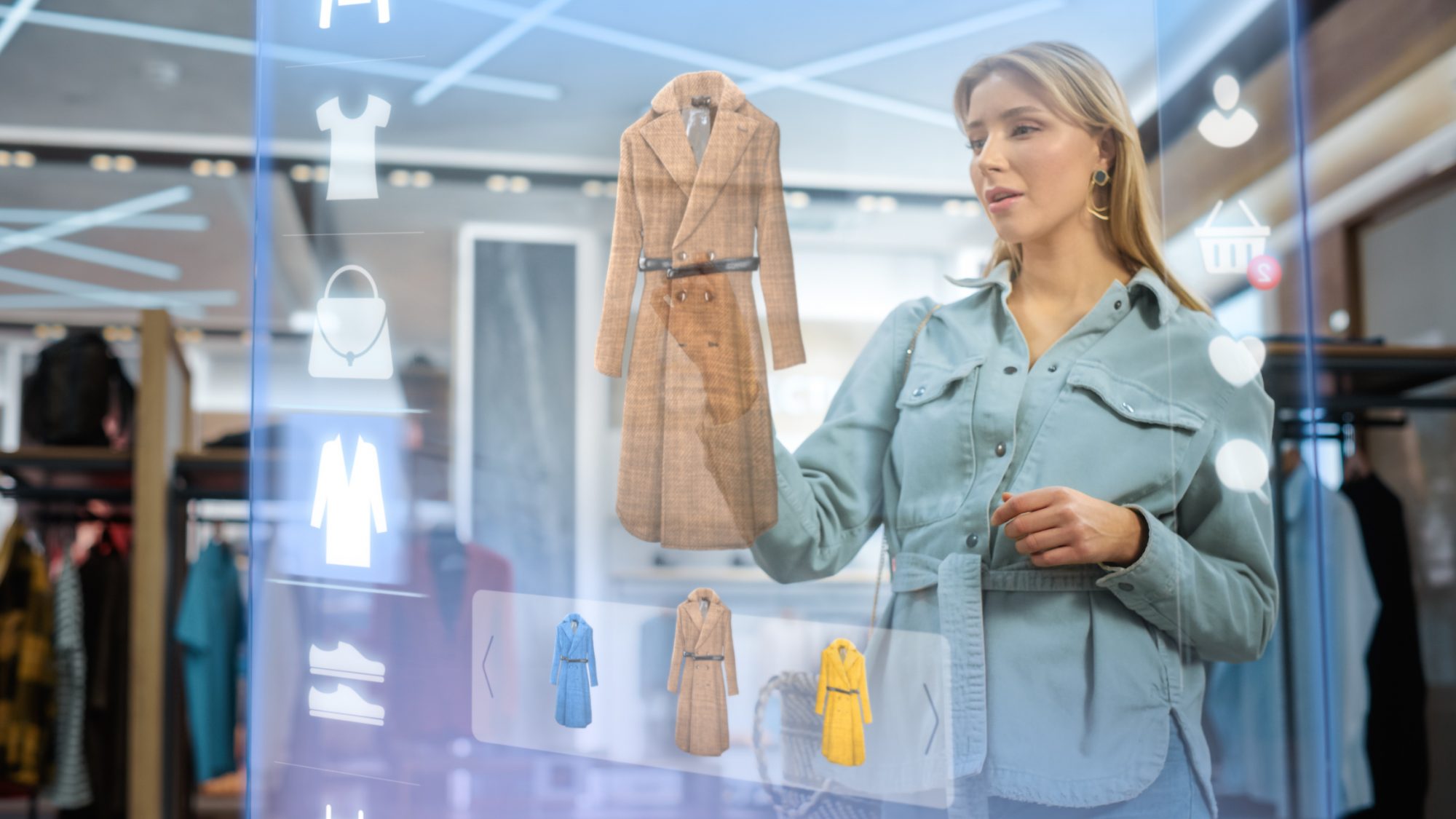In the fiercely competitive retail market, businesses face escalating customer demands. To thrive, organisations must leverage virtual reality technology
Virtual reality (VR) is one of these technologies, and in recent years, it has penetrated deeply into the retail market. According to Grand View Research, the global virtual reality in retail market size was valued at $3.25 billion in 2022.
Moreover, the experts expect the technology to grow at a compound annual growth rate (CAGR) of 28% from 2023 to 2030.
One of the reasons for continuous VR popularity among retailers is its ability to transform and enhance the customer experience via immersiveness and advanced emotional engagement. Here are some considerations on how exactly adopting Virtual reality in retail can help businesses.
Enhancing traditional commerce with virtual reality
At the start of its VR journey, an enterprise can refrain from complete digital transformation, which can be too costly and disruptive for business.
Instead, an enterprise can adopt VR incrementally, making partial improvements to its service.
As an option, a business can introduce VR into its physical stores to streamline and facilitate the buying process.
For example, a furniture retailer can install self-service VR kiosks in its stores so that a visitor can view a virtual product catalog via a VR headset and even try on furniture in a virtual interior to see how it looks in a room of a certain format and size.
Later, if an enterprise decides to scale the technology usage and go further on its VR retail transformation, it could initiate the creation of a web-based VR showroom. A VR showroom allows customers to try on a retailer’s products online, eliminating the need to visit a physical store and thus making the buying process even more convenient.
- Real-life examples: Amazon and Alibaba
Amazon installed its VR kiosks in multiple shopping malls to promote Prime Day, an annual sale event for Amazon Prime members. Kiosk users could use Oculus Touch controllers to browse through Amazon’s virtual product catalog, get a 360-degree product view, and even try on clothes on virtual models.
Another enterprise, Alibaba, has established a virtual store called Alibaba`s Buy+. The users of smartphone-based VR headsets could visualise the clothes and accessories they liked on a virtual catwalk and then buy them directly in the virtual environment.
A few days after the launch, more than 8 million people used Alibaba`s Buy+.

Empowering marketing and advertising with virtual reality
To be highly competitive, a retailer must provide an outstanding experience in the earlier stages of customer interaction, when clients are still considering a purchase and a particular brand. In particular, an enterprise can consider improving its marketing and advertising activities with virtual reality.
Considering that virtual reality induces a strong emotional involvement, the implementation allows retailers to make marketing more effective, boosting sales. Moreover, adopting virtual reality marketing helps establish additional sales channels for customer segments who have and use VR at home. According to S&P, the number of installed AR/VR headsets will reach 73.6 million in 2026.
- Real-life examples: Merrell and Topshop
Merrell, an American footwear manufacturer and retailer, has launched a VR marketing campaign to promote its Capra hiking boots. Wearing VR helmets, customers navigated a virtual obstacle course, which allowed them to try and appreciate their shoes’ functionality and increase their engagement with the brand.
Topshop, a UK-based retailer of women’s clothing, shoes, and accessories, promoted the start of its summer season with an outstanding VR campaign.
The retailer created a VR-powered installation that enabled customers to slide down a giant virtual loop along Oxford Street, encountering exclusive surprises from Topshop along the way.
Providing VR-powered employee training
Apparently, an attempt to improve customer experience can fail if the retailer’s employees lack the skills and competencies to provide high-quality and competitive services. However, retailers can quickly close the skill gap and improve employee proficiency by adopting VR-based training.
Depending on their needs, businesses can adopt different types of VR training. For example, employees can practice interacting with virtual customers in a VR environment in order to develop communicative skills.
This way, employees can also train to process client requests and complaints and thus be ready to address specific customer issues in real life.
- Real-life examples: Walmart and Sprouts
Since 2017, Walmart has been using VR technology in its Walmart Academies, training centers that evaluate and train enterprise employees.
Using VR, employees complete various scenarios that simulate real-life situations; for example, they get ready for Black Friday when customers flood stores. VR has improved employees’ test scores by 10% to 15% compared to traditional training.
Sprouts, a US-based supermarket chain, is another example of a retailer that has successfully transformed the business by adopting immersive training.
The main focus of the VR training was teaching the retailer’s core values and improving customer support. After the project implementation, Sprouts claimed that employees who participated in training demonstrated 16x better results than non-VR learners.
VR can become an indispensable assistant
Constant fluctuations in the market, including changes in customer behavior and expectations, make retailers adapt continuously, which can be extremely challenging without the right commerce technology.
VR can become an indispensable assistant – allowing retailers to provide an outstanding customer experience and thereby stand out among the competition.
For example, retailers can implement virtual assistants to augment traditional commerce interactions or build VR showrooms to provide more advanced immersive experiences.
In addition, retailers can use VR to train employees, thus improving the quality of service and support.
Editor's Recommended Articles
-
Must Read >> Access control and what the future looks like














